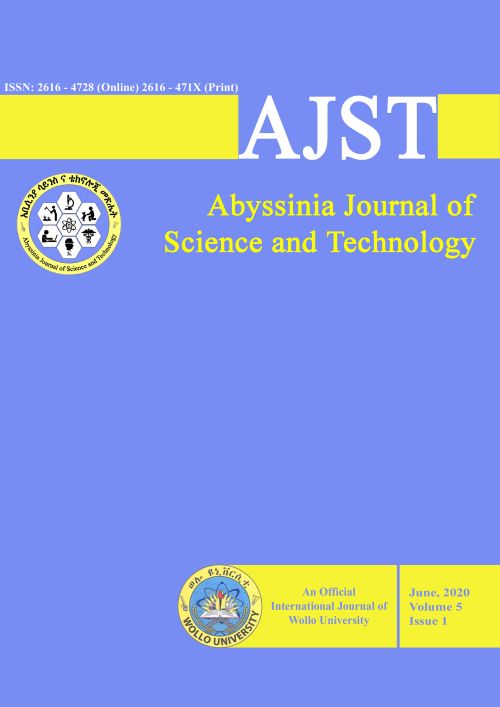Main Article Content
Abundance and geographical distribution of invasive weed species in the Western Amhara Region, Ethiopia
Abstract
Plant invaders that are not yet found in the western Amhara Region start to emerge and wielding negative impacts. This study was conducted to assess the abundance and geographical distribution of invasive alien weed species (IAWS) in the western Amhara Region. 140 fields were surveyed at a regular interval of 5-10 km and the geographical coordinates of the sampling points were recorded using Garmin GPS receiver to map the extent of major IAWS infestations. IAWS types and their abundances were recorded from every sampling point. Frequency and average percent cover was calculated to quantify geographical distribution and abundance of IAWS, respectively. The result of the study depicted that fourteen IAWS were recorded in the Western Amhara Region growing in different habitats and agro-ecologies at varying levels of abundance along the road roadsides, grazing lands, and croplands. Among those IAWS Argemone mexicana, Datura stramonium, Senna didymobotrya, and Tagetes minuta were widely distributed in the study area with a frequency of 51.4%, 73%, 66%, and 51.4%, respectively however others had frequencies less than 25%. The result of the study also revealed that most of the IAWS had lower abundance levels except three species (Argemone mexicana, Datura stramonium, and Senna didymobotrya) which had frequent to abundant abundance levels. Therefore, early detection and eradication with appropriate management practices should be done to reduce the risk of IAWS on grazing and cropping land when present in small numbers. In addition, creating public awareness would also provide a synergistic effect to tackle IAWS.







